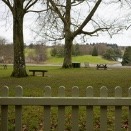m10p Zone focusing not sharp (enough) vs focusing to infinity
-
Recently Browsing 0 members
- No registered users viewing this page.
-
Similar Content
-
- 6 replies
- 534 views
-
- 31 replies
- 1,832 views
-
- 84 replies
- 4,483 views
-
- 18 replies
- 557 views
-
- 290 replies
- 154,097 views
-




Recommended Posts
Join the conversation
You can post now and register later. If you have an account, sign in now to post with your account.
Note: Your post will require moderator approval before it will be visible.